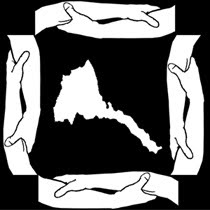martedì 13 marzo 2012
YEMEN: Tortured for ransom
African migrants in Yemen
HAJJAH, 12 March 2012 (IRIN) - The discovery of 70 battered men and women held captive in a remote area of Yemen’s Hajjah Governorate near the Saudi Arabian border has sparked an investigation into the torture and extortion of African immigrants by criminal gangs, say local authorities.
The men and women, Oromos and ethnic Somalis from Ethiopia’s Somali Region, had been held for some time in a house in the Sharqia area of Haradh city, and were found wearing just their underwear. Two men who managed to escape by jumping over the wall of the house, alerted the authorities. Their captors, they said, had beaten them with pipes, burned them with cigarettes and poured liniment in their eyes, making them scream in pain.
"We are really shocked," said Ali Ibrahim, a criminal investigator in Haradh. "I have been in the department for 15 years and I don't remember anything like this… It's unbelievable that this was going on in our own back yard.”
Another government official who preferred anonymity told IRIN: "This problem is unique. No one could imagine that the people were kept in a smuggler’s house for such a long period of time. We don’t know how many were killed.”
Many of the victims, according to head of Haradh Security Department Mohammed Najad, were trying to find their way to Saudi Arabia to get work, but had ended up in the hands of criminals who demanded thousands of dollars in ransom for their release.
The immigrants are tortured until their families send ransom money, or until enough new immigrants arrive, as there is simply not enough space to keep all the migrants, said Berhane Taklu-Nagga, head of the UN Refugee Agency (UNHCR) office in Haradh.
On 6 March, the local independent news website Al-Masdaronline.net published pictures of some of the victims.
According to a recent Interior Ministry report, 170 Africans were held captive, tortured and mistreated by criminals in Haradh between January 2011 and February 2012.
“The victims include 91 young men, 10 women, 50 children and 19 elderly men,” the report said, adding that most had been beaten, scalded or punched in the face, leaving some with visual and hearing problems.
In February, the ministry said, police in Haradh had arrested two suspects. One was holding 49 and the other 79 Ethiopian illegal immigrants.
The authorities are still searching for another 20 Ethiopian female immigrants whom they believe are at risk of being tortured and raped, said Hamoud Haidar, head of Haradh Local Authority.
Rape
One common method of torture is rape. “According to the testimonies collected, it appears that the majority of the approximately 3,000 women held by smugglers in Haradh over the past year were raped, many of them repeatedly,” said UNHCR’s Taklu-Nagga.
Only after eight months when my father was able to send the smugglers US$5,000, did they release me…I must have an abortion. My husband should not know what happened to me in Haradh, and I must not give birth to this childIn a sample of 24 interviewees, 17 said that they had been raped, according to Taklu-Nagga. “The figure is expected to be much higher, considering that rape victims are typically very reluctant to come forward, particularly those from conservative African societies where victims of sexual assault are often ostracized by their communities,” he told IRIN.
Some of the rape victims got pregnant. “Only after eight months when my father was able to send the smugglers US$5,000, did they release me,” recounted one of the rape victims, who requested anonymity. “I must have an abortion. My husband should not know what happened to me in Haradh, and I must not give birth to this child.”
One of the male victims told IRIN that several men were raped as well - as punishment for trying to prevent the rape of the women.
Screaming at night
Other victims lost body parts. Adeemi Abdullahi lost his left eye after being tortured for two months in Abs District, Hajjah Governorate. He showed IRIN marks from the lashings he had received on his back and legs, and scratches on his face and head.
“They had been beating me up mercilessly for more than 50 days… They didn’t give me even a paper tissue to wipe blood from my eye,” the 30-year-old Ethiopian said.
When he was captured he was given five days to contact any person he knew to transfer money to his captors. He failed. “From day six began my hardest ordeal,” he said.
A resident of the Sharqia area said he and his neighbours could hear screaming at night but feared reporting it to the police. In mid-February, the authorities approached a suspected detention house, but were confronted by gunmen. “They fired at us and damaged our cars,” said Haradh local authority head Haidar.
So far, Haradh Security Department has identified 19 owners of properties with yards and high walls in villages outside the city suspected of being used as detention centres.
Despite widespread unrest in Yemen in the past year, there has been close to a 100 percent increase in the number of Ethiopians arriving in Yemen from the Horn of Africa: more than 65,000 Ethiopians have arrived, compared to 34,422 in 2010, said the International Organization of Migration (IOM) in December.
According to UNHCR’s Taklu-Nagga, 10,000-15,000 Ethiopian immigrants annually enter Haradh illegally along Yemen’s western coast.
ay/eo/cb
Theme (s): Conflict, Human Rights, Migration, Refugees/IDPs, Security,
[This report does not necessarily reflect the views of the United Nations]
Iscriviti a:
Commenti sul post (Atom)

Nessun commento:
Posta un commento